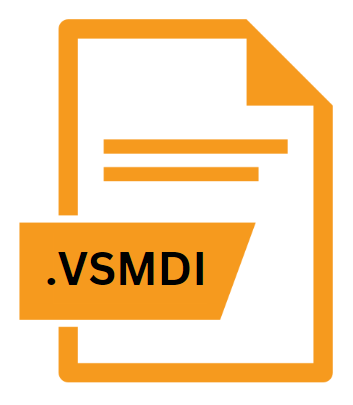.VSMDI File Extension

Visual Studio Test Metadata File
| Developer | Microsoft |
| Popularity | |
| Category | Developer Files |
| Format | .VSMDI |
| Cross Platform | Update Soon |
What is an VSMDI file?
.VSMDI files are associated with Visual Studio, Microsoft’s flagship IDE used for developing a wide array of software applications. These files play a crucial role in organizing and managing test metadata within Visual Studio projects.
Test metadata includes information such as test cases, test configurations, and test results, providing developers with valuable insights into the testing process.
More Information.
Visual Studio has long been favored by developers for its robust testing capabilities. With the introduction of the .VSMDI file extension, Microsoft aimed to enhance the organization and management of test metadata within the IDE.
This allowed developers to seamlessly integrate testing into their development workflow, facilitating the creation, execution, and analysis of tests directly within Visual Studio.
Origin Of This File.
The .VSMDI file extension was introduced alongside Visual Studio, likely stemming from the necessity to streamline the testing workflow within the IDE.
As software projects grew in complexity, managing test data became increasingly challenging. The .VSMDI format emerged as a solution to this problem, offering a structured approach to organizing test-related information within Visual Studio projects.
File Structure Technical Specification.
.VSMDI files adhere to a specific structure and contain various sections to store different types of test metadata. These sections may include:
- Test Cases: Information about individual test cases, including their names, descriptions, and associated test methods.
- Test Configurations: Configurations for running tests under different conditions, such as different environments or input parameters.
- Test Results: Results of test executions, including pass/fail statuses, execution times, and error messages.
The technical specifications of .VSMDI files are proprietary to Microsoft and are closely integrated with Visual Studio’s testing framework.
How to Convert the File?
Converting .VSMDI files to other formats or vice versa may be necessary in certain scenarios, such as migrating test data to a different testing platform or integrating with third-party tools.
Direct conversion methods may not be readily available due to their proprietary nature of .VSMDI files, alternative approaches can be adopted:
- Exporting: Visual Studio provides options to export test data in various formats, such as Excel or XML. Developers can utilize these export functionalities to convert .VSMDI files to compatible formats.
- Custom Scripts: Custom scripts or utilities can be developed to parse .VSMDI files and extract relevant test metadata, which can then be converted to the desired format using scripting languages like Python or PowerShell.
- Third-Party Tools: There are third-party tools available that offer functionality for converting test data between different formats. While these tools may not directly support .VSMDI files, they can potentially serve as intermediaries for converting to and from other formats supported by Visual Studio.
Advantages And Disadvantages.
Advantages:
- Centralized Test Management: .VSMDI files provide a centralized repository for test metadata, making it easier for developers to manage and track testing activities.
- Integration with Visual Studio: Since .VSMDI files are native to Visual Studio, they seamlessly integrate with the IDE’s testing tools, offering a cohesive testing experience.
- Version Control: Test metadata stored in .VSMDI files can be version-controlled along with the rest of the project, ensuring consistency and traceability across development iterations.
Disadvantages:
- Platform Dependency: .VSMDI files are tightly coupled with Visual Studio and may not be easily portable to other development environments.
- Limited Flexibility: While .VSMDI files offer comprehensive support for test management within Visual Studio, they may lack some advanced features available in dedicated test management tools.
- Learning Curve: Working with .VSMDI files require familiarity with Visual Studio’s testing framework, which may pose a learning curve for novice developers.
How to Open VSMDI?
Open In Windows
- Visual Studio: .VSMDI files are native to Visual Studio. Simply double-clicking the file should open it directly within Visual Studio on Windows.
Open In Linux
- Wine: Linux users can use Wine, a compatibility layer, to run Windows applications. Install Wine, then right-click the .VSMDI file and select “Open With > Wine Windows Program Loader” to open it in Visual Studio under Wine.
Open In MAC
- Virtual Machine: macOS users can run Windows within a virtual machine using software like Parallels Desktop or VMware Fusion. Install Visual Studio within the virtual machine and open the .VSMDI file as you would on a Windows system.













